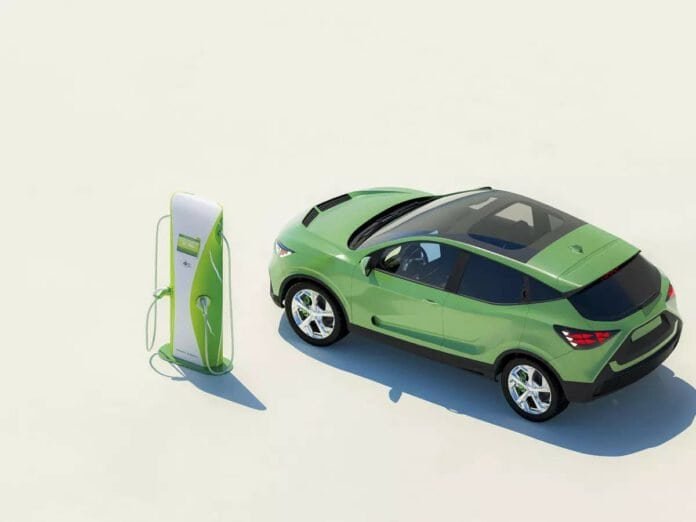Electric vehicles (EVs) are a critical component of the world’s transition to net-zero energy. In this environment, hybrid EVs offer a significant opportunity for economically developing nations: even though these nations’ power generation and grid capacity and reliability, percentage of renewable energy sources in the power generation mix, and accessibility of fast-charging infrastructure are still far from ideal, hybrid EVs provide a way to start the transition now rather than waiting.
Contents
What does “net zero” for a car mean?
Net zero for a car includes emissions from the power plant as well as the vehicle’s tailpipe. Cutting emissions from both new and existing cars is necessary to achieve net-zero transportation.
What different EV types are there?
An electric vehicle (EV) is any vehicle with an electric drivetrain that draws its power from a portable electrical energy source.
In a hybrid EV, an electrical generator and an internal combustion engine (ICE) are used to generate power. In a hybrid EV, a small battery, typically 1 to 5 kWh, is utilised as an energy buffer to store the electricity. The grid cannot be used to recharge the battery.
- A full EV, also known as a battery EV or a plug-in EV, has no ICE and no exhaust pipes. The battery is usually significantly bigger, ranging from 20 to 120 kWh. The only way to charge it is from the grid.
- A plug-in hybrid EV (PHEV) is still a hybrid EV, but it has a considerably bigger battery, usually 5 to 15 kWh. Additionally, the grid can be used to charge this bigger battery. As long as there is power in the battery, a plug-in hybrid EV runs similarly to one that is entirely electric.
- A fuel-cell electric vehicle (FCEV) employs a fuel cell to provide power for the drivetrain and a small battery buffer to handle variances.

What is the fuel efficiency of EVs that are fully electric and hybrid?
A hybrid EV (HEV) has a fuel efficiency that is 1.5–2 times higher for city driving and 1-1.5 times higher for highway travel than a standard ICE car due to the usage of an ICE in conjunction with a generator and battery.
The finest features of hybrid and full EVs are combined in a plug-in hybrid vehicle. It can complete 80–90% of all short daily travels in a fully electric mode while using 3–4 times less gasoline than conventional cars thanks to a compact battery (5–15kWh) that can be charged from the grid. A driver can switch to the hybrid mode while travelling intercity.
What are the hybrid EVs’ net emissions?
The net emissions of a vehicle are a crucial factor in addition to fuel efficiency. Well-to-wheel emissions comprise both emissions from the exhaust and emissions from the generation of fuel, whether it be electricity or fossil fuels. The life-cycle emissions index is a more thorough measurement that takes into account emissions from well to wheel as well as emissions from the manufacture, upkeep, and recycling of batteries and vehicles.
Currently, the decarbonization levels of the grids in various nations vary (Figure 2). For fully electric vehicles, lower power production emissions translate into lower well-to-wheel and life-cycle emissions.
What difficulties does switching to electric mobility present?
First, fast-charging infrastructure along roads is necessary for a smooth transition to fully electric vehicles. This is crucial because individuals often want to acquire one reasonably priced automobile that can meet their short- and long-distance travel demands over a period of five to fifteen years, and they want to drive without experiencing range anxiety. People won’t purchase fully electric vehicles if there is no infrastructure for fast charging.
Power outputs of 50–350 kW for cars and up to 1,000 kW for heavy-duty vehicles are considered fast charging. Our devices charge at 10–25 W, for comparison. Drivers will be able to travel large distances in their EVs with 10–20 minute pauses thanks to fast charging, increasing their ranges to 300–400 km. The capital cost for EV fast chargers ranges from $500 to $1,000/kW, service and maintenance costs are 5% annually, and installation costs are roughly 50% of the charger cost.
The need for high-capacity power connections, the price of creating and installing a new transformer and cables, service-level agreements, the types and quantities of DC charger plugs, customization prices, labour expenses, and permits are all factors that contribute to the high cost and broad variety.
Second, there are many regions of the world, particularly those that are economically developing, that do not yet have access to a grid or whose grid is not entirely trustworthy. The issue is made more obvious in relation to generating and gearbox capacities by the relatively high charging power for slow-charging (22kW) and fast-charging (350kW). This might thus delay the switch to EVs.
Third, EVs with a range of 300-400 km will eventually cost between $25,000 and $35,000 in the richest countries, whereas mass-market price points of automobiles in the economically developing world are significantly lower, at around $12,000. This is because batteries are expensive—between $130 and $200 per kWh at the pack level. EVs with longer ranges will cost more since larger battery packs are required.


